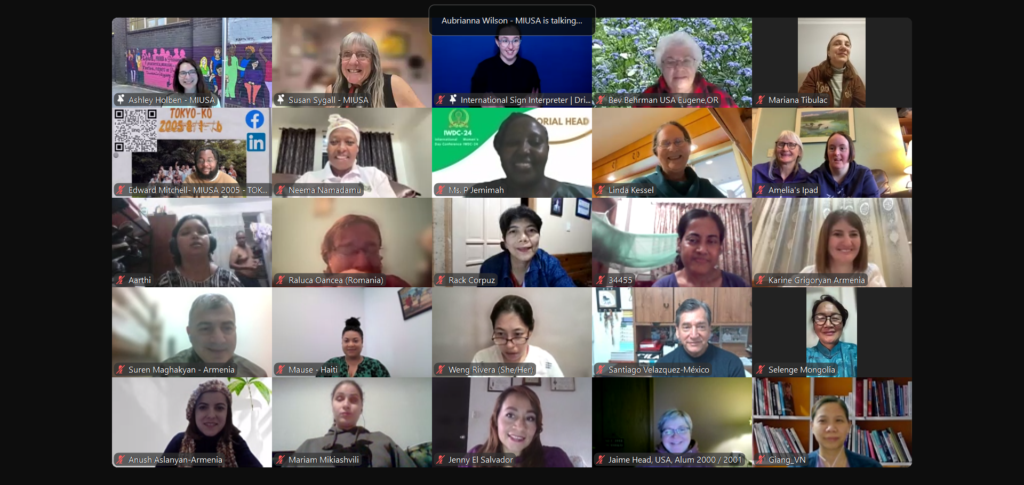For years, the annual Open Doors survey has provided a snapshot of the participation of college students with disabilities and other diverse identities in U.S. study abroad programs. Now a survey from Diversity Abroad is adding to the picture of how diversity is represented in education abroad by inviting international educators to self-identify.
In honor of International Education Week in November 2020, the Institute of International Education (IIE) released the latest findings collected from Open Doors, a voluntary online survey inviting U.S. higher education institutions to share demographic data and other information related to U.S. study abroad students. The latest data below* gives an overview of who studied abroad during the 2018/19 academic year. Here’s what Open Doors reported regarding students with disabilities:
No disability: 89.5%
Disability: 10.5%Learning disability: 32.5%
Mental disability: 35.5%
Physical disability: 3.3%
Sensory disability: 3.0%
Autism spectrum disorder: 2.2%
Chronic health disorder: 17.2%
Other disability: 6.4%Number of institutions reporting disability status: 317
Total: 347,099
*Source: Institute of International Education. (2020). “Profile of U.S. Study Abroad Students, 2006/07 – 2018/19” Open Doors Report on International Educational Exchange. Retrieved from https://opendoorsdata.org/. Open Doors is sponsored by the U.S. Department of State with funding provided by the U.S. Government and supported in its implementation by IIE.
Overall disability representation among U.S. study abroad students (10.5%) was somewhat higher than in the previous year (9.2% for the year 2017/18), with modest increases in students identified as having chronic health disorders, mental disabilities, and “other” disabilities.
Observing the data might indicate a few goals for the international education field:
Motivated by the principle that “representation matters,” the international education field has placed increasing emphasis on diversity among not only study abroad students, but also international educators. Irene Scott, Education Abroad Program Manager at Texas A&M University and Co-chair of NAFSA’s Diversity & Inclusion Subcommittee, shared one insight about how people with disabilities working in education abroad leadership roles can potentially engage disabled students who might otherwise be on the fence about going abroad:
“I’ve been able to personalize my advice for students who are hard of hearing about accommodations or other considerations when traveling. Even if our disabilities are different, knowing that someone else has walked that road [of going abroad] helps put students at ease. It shows them that it’s possible.”
With this possibility in mind, Diversity Abroad launched the 2020 Survey on Diversity & Inclusion Among International Educators, addressing the climate of diversity, equity, and inclusion in the international education workplace. Like Open Doors, the survey collected information on disability identity alongside other types of diversity.
Among the 925 individuals responded to the 2020 survey, “76.1% did not identify as having a disability” (alternatively: could we then surmise that up to 23.9% of respondents DO identify as having a disability?), with mental health conditions and chronic illness being the most frequent self-identified disability reported by participants. Other disability-related data included:
Mental health conditions: 9.4%
Chronic illness: 9.4%
Vision impairment (including blindness): 1.7%
Two or more selected: 7.5%
Deafness or hard of hearing: 0.3%
Learning impairment: 0.4%
Physical mobility impairment: 0.6%
Autism spectrum disorder: 0.2%
Speech or language impairment: 0.1%
Source: Diversity Abroad
The survey data shows over the past three years the field is diversifying slowly, but much more needs to be done. The report, along with a supplemental webinar hosted by Diversity Abroad, also explores whether diverse international educators experience a “sense of belonging” at their institution/organization and in the international education field more broadly, asking international educators to reflect on the following questions:
The National Clearinghouse on Disability and Exchange, whose mission has historically been to increase disability representation among international exchange participation, also encourages disabled people to enter careers in international education. Use the following resources to build on your advocacy for diversifying the field:
Sign up for our E-News






Manage Your Privacy